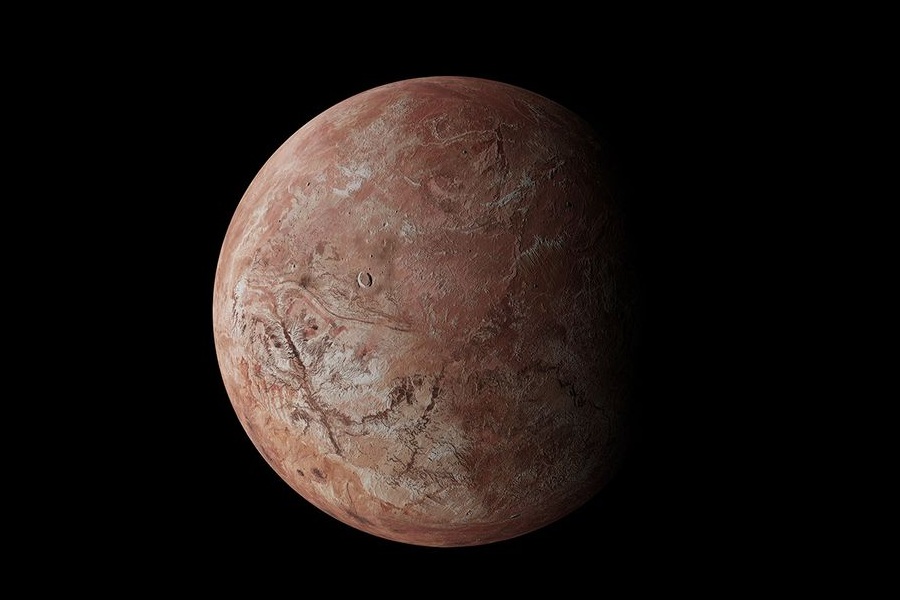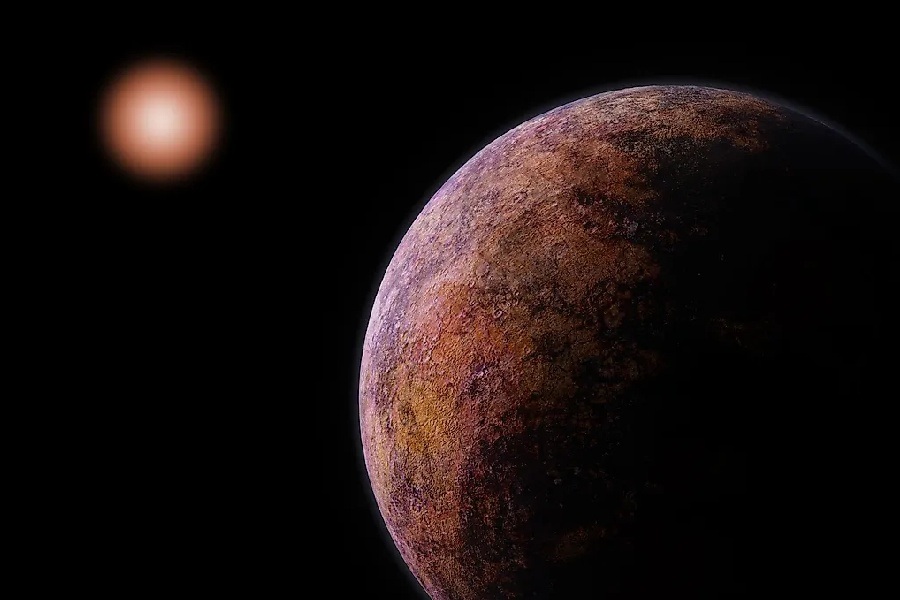In the cosmic expanse of our solar system, celestial mysteries often linger, awaiting the gaze of curious astronomers. Makemake is a distant dweller in the Kuiper belt, standing as a testament to the hidden gems that populate our cosmic neighborhood.
The question lingers – when was Makemake discovered, and what celestial events led to its revelation? This article embarks on an exploration into the icy outskirts, unraveling the story behind Makemake’s emergence from cosmic obscurity.
Join us on this cosmic journey, tracing the footsteps of Makemake’s revelation. From the first hints to the precise moments of recognition, this exploration promises to provide a glimpse.
It offers insight into the ongoing saga of our solar system’s unfolding secrets. It’s a saga that continues to captivate, enriching our understanding of the cosmic tapestry that envelops us.

When Was Makemake Discovered?
Bathed in the faint glow of the Kuiper belt, Makemake beckons with tales of celestial intrigue. A narrative written in icy orbits and patient observations, its discovery unveils the meticulous dance of astronomers and their instruments.
When was Makemake discovered? This dwarf planet, located in the Kuiper Belt, was discovered on March 31, 2005, by a team of astronomers led by Michael E. Brown, Chad Trujillo, and David Rabinowitz at the Palomar Observatory in California.
The discovery was made as part of the ongoing survey of the outer Solar System. Specifically, it was targeting the Kuiper belt – a region beyond Neptune populated with small, icy bodies.
Makemake’s identification added to our understanding of the diversity of celestial objects in the outer reaches of our solar system.
Who Discovered Makemake?
The discovery of Makemake was thanks to the cooperative work of a skilled team. Michael Brown led the effort, bringing his expertise in locating planets. Chad Trujillo assisted Brown, contributing through his studies of distant objects past Neptune.
Additionally, David Rabinowitz aided through surveying the Solar System’s edge. This impressive trio did not rely on solo efforts but together combined their unique talents. Through collaborative analysis of data, drawing on one another’s specialized strengths, Brown, Trujillo, and Rabinowitz uncovered Makemake.
Their harmonious teamwork expanded the Solar System’s family, yielding an important joint discovery in Makemake. No one could have accomplished this alone – it was the melding of skills between Brown, Trujillo, and Rabinowitz that led to fruitful results.
When Was Makemake Discovered?
Unraveling celestial timelines
Makemake’s discovery date is recent – it was found on March 31, 2005, just 15 years ago. But that is very new on cosmic timescales when many planets have been known for centuries. Makemake only emerged in 2005.
Dive into the historical context
The 2000s were big for dwarf planets, as many were found then, including Makemake and Eris. Advanced tools helped enable the new discoveries, as computers could analyze more data, and digital cameras had better sensors.
Scientists also knew where to focus searches more precisely, targeting the fringes of the Kuiper belt. This context enabled Makemake’s debut.
How Was Makemake Discovered?
Celestial detective work
The discovery of Makemake required some celestial detective work. The team used advanced tools to spot it. They employed wide-field surveys to comb the sky. Powerful charge-coupled device cameras imaged large areas.
Computers analyzed vast amounts of data. Complex software helped detect faint moving objects. Makemake was one of many new discoveries made possible by these tools. They unveiled countless hidden worlds.
Technological advancements
Many key innovations enabled the discovery. More sensitive digital cameras imaged the sky, faster computer processing sifted data, and knowledge networks shared information globally. Knowledge of where to look also helped find Makemake.
The team’s past success locating distant objects played a role, as experience with Pluto’s orbit narrowed the search area. Their expertise combined with advancing technology to ultimately reveal Makemake.

Significance of the Discovery of Makemake
Makemake’s discovery was significant. It showed more objects orbiting far out. This expanded our solar system’s reach. It hinted at a vast, undetected population.
Many more distant worlds likely exist. Makemake also gave clues to the Solar System’s past. Its orbit aligned with others. This pointed to a shared origin. Makemake revealed the Kuiper belt is more dense. This region beyond Neptune hosts many worlds.
Makemake revealed our solar system is bigger, extending much farther than we knew, with likely many icy dwarf planets beyond Neptune. Makemake also showed evidence of planet migration – when planets shift orbits over time.
Makemake and other Kuiper belt objects display signatures of this migration process, as their aligned orbits suggest they formed closer in before later moving farther out.
Makemake provided key data to unravel these mysteries. Its discovery yielded pivotal insights that helped explain the outer Solar System’s architecture, giving context to our place in space.
Classification of Makemake
Makemake is classified as a dwarf planet. This places it in a unique category. It orbits the Sun but isn’t a full planet. Makemake is much smaller than planets like Earth but it is larger than most objects in the Kuiper belt. Makemake has enough mass to be rounded by gravity. Its spherical shape defines it as a dwarf planet.
Makemake shares traits with other dwarf planets. Like Pluto, it is small and icy. Makemake is also far from the Sun. It has a highly elliptical, distant orbit. Makemake has at least one moon.
Many other dwarf planets have moons too. But Makemake does not dominate its orbital zone. This helps distinguish it from a true planet. Its diminutive size suits its dwarf planet identity.
Details about Makemake
Makemake is a dwarf planet. It orbits in the Kuiper belt. This region lies past Neptune. Makemake is small, only about two-thirds Pluto’s size. It is orbited by a moon.
The moon is very small, only about 50 miles wide. Makemake has a reddish color. This implies an icy surface. The surface may contain frozen methane. Like Pluto, Makemake is covered in these ices. Its distant, cold location preserves them.
Though small, Makemake is one of the brightest Kuiper belt objects. This makes it easier to study. Its brightness and proximity provide insights. Makemake is a frozen remnant from our solar system’s dawn.
It has a very long orbit around the Sun. Completing one lap takes over 300 years. Makemake was likely formed closer to the Sun. Then migrated outward over time.
What Does the Presence of Makemake Mean for Astronomy?
Cosmic implications
Makemake’s discovery has big implications. It shows the Kuiper belt contains many objects, not just Pluto alone. The presence of this icy dwarf planet hints at a vast, unseen population of worlds beyond Neptune. Trillions of comet-like objects likely exist in this cold outer region.
Makemake encourages further exploration of the Kuiper belt. Its existence is evidence of the Solar System’s complex history.
Makemake displays signatures of orbital migration over time, pointing to dramatic reshuffling early in the Solar System’s life. Along with other Kuiper belt objects, Makemake helps demonstrate the intricate celestial dance of icy bodies beyond Neptune.
Explore the contributions
Makemake contributes much to astronomy. It provides clues about our solar system’s origins. Studying Makemake sheds light on planet migration theories. Its existence helps us grasp the Kuiper belt’s extent and contents.
Makemake also expands our understanding of dwarf planets. It adds one more example to study and compare. Its presence spurs the search for other objects far from the Sun.
It focuses research on the Kuiper belt’s denizens. Makemake inspires us to keep studying the outer Solar System. Many more discoveries undoubtedly await in that vast distant realm.
Conclusion
When was Makemake discovered? The discovery of the distant dwarf planet Makemake has expanded our understanding of the outer Solar System. This remote world’s detection unveiled new secrets about the dim and frozen Kuiper belt.
We hope this article has illuminated the story behind Makemake’s emergence from obscurity. This includes spotlighting the team that first discovered Makemake in March 2005 and the methods they employed.
Their efforts brought this icy denizen of the outskirts into view. The implications of Makemake’s presence are also far-reaching, demonstrating the incredible diversity harbored in the Kuiper belt.
As astronomy continues probing the frontiers of our solar system and uncovering new realms, we gain profound insights into our cosmic context. Discoveries like Makemake help write the intricate history of when, where, and how our celestial neighborhood came to be.
